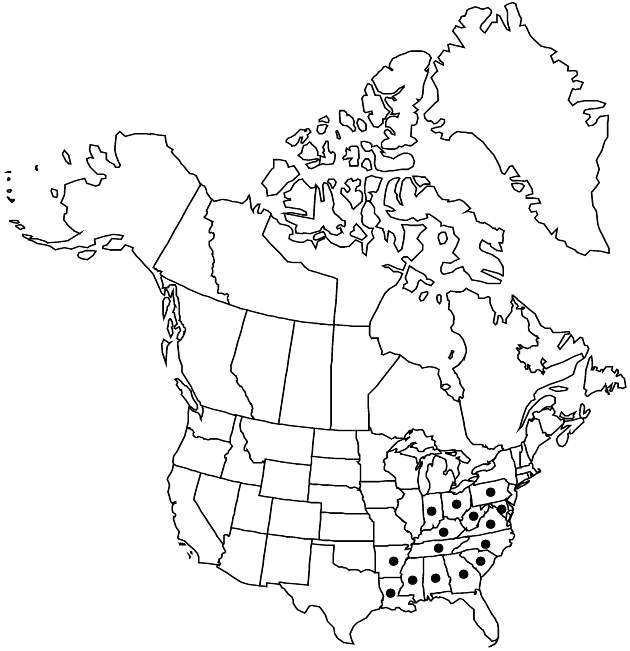Antennaria solitaria
Bull. Torrey Bot. Club 24: 304. 1897.
Dioecious. Plants 2–25(–35) cm. Stolons 5.5–20 cm (filiform). Basal leaves: 3–5-nerved, obovate to broadly oblong-spatulate, 20–75 × 15–45 mm, tips mucronate, abaxially tomentose, adaxially gray-pubescent to floccose-glabrate. Cauline leaves linear, 1–17 mm, distal flagged. Heads borne singly. Involucres: staminate 8–11 mm; pistillate 8–14 mm. Phyllaries (bases green or brown) distally white. Corollas: staminate 3.8–5.5 mm; pistillate 4.5–7 mm. Cypselae 1–2 mm, papillate; pappi: staminate 4.5–7 mm; pistillate 6–9 mm. 2n = 28.
Phenology: Flowering early–mid spring.
Habitat: Slopes or stream banks in moist, rich, deciduous woodlands, forests, sometimes forest openings
Elevation: 0–1500 m
Distribution

Ala., Ark.. Ga., Ind., Ky., La., Md., Miss., N.C., Ohio, Pa., S.C., Tenn., Va., W.Va.
Discussion
With its relatively large, 3–5-nerved, basal leaves and relatively large heads borne singly, Antennaria solitaria is an easily recognized amphimictic member of the Catipes group (R. J. Bayer and G. L. Stebbins 1982). It is a sexual diploid progenitor of the A. parlinii polyploid complex.
Selected References
None.